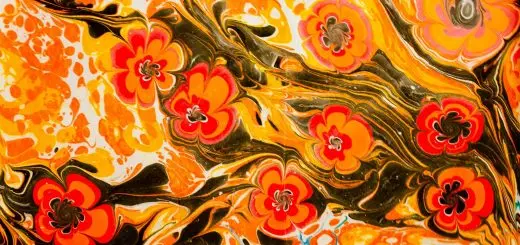Why Is Mardi Gras Called “Fat Tuesday”?

Looking for more amazing products? Check out our online store and explore our collection here! Happy shopping!
Before diving in, please note: This post is for informational purposes only. If you’d like to know more about how we approach topics, feel free to check out our friendly Disclaimer Page.
Hey there, amazing readers! 
We’re committed to delivering quality posts, and your support (even just sticking around despite the ads) means everything to us. So, bear with us, and thanks for helping us keep the good vibes rolling. Now, on to the fun stuff!
TRANSLATE BUTTON AT THE END OF THE ARTICLE
A Quick Overview
Mardi Gras, or Fat Tuesday, is a vibrant celebration rich in history, culture, and culinary delight.
It marks the last day of feasting before the solemn season of Lent begins in many Christian traditions.
The name "Fat Tuesday" hints at the indulgence we see in rich foods and lively festivities.
But why this specific moniker?
Let’s dive deep into the traditions, history, and significance of this lively day.
Exploring the Origins of Mardi Gras Celebration
Mardi Gras has a fascinating history that traces back to ancient times.
The origins of this festive day can be linked to pagan spring and fertility rites.
Over the years, these customs blended with Christian traditions, especially as Christianity spread across Europe.
Fast forward to the Middle Ages, and Mardi Gras began to take on a distinctly Christian character.
Celebrations often revolved around feasting before the period of Lent, a time of fasting and reflection for many Christians.
In France, the term "Mardi Gras" translates directly to "Fat Tuesday." This name embodies the essence of the day: a final feast before the fasting period.
With the French settlers bringing their customs to America, especially to New Orleans, Mardi Gras soon took root in the U.S.
In New Orleans, the celebration has evolved to incorporate local culture, music, and cuisine.
The spirit of Mardi Gras is alive and well, characterized by vibrant parades, elaborate costumes, and a sense of community.
Thus, as we can see, Mardi Gras is not just a day; it’s a blend of ancient traditions and new interpretations.
It’s a celebration of joy, life, and culture spread across the globe.
What Makes Mardi Gras a Day of Indulgence?
Indulgence is the name of the game on Mardi Gras.
Picture this: streets bustling with revelers, music filling the air, and delicious food everywhere you look.
This day invites everyone to partake in rich culinary treats, decadent desserts, and a fun, carefree atmosphere.
One reason for such indulgence is the anticipation of Lent.
For many, Lent represents a time of sacrifice, where they forgo certain luxuries.
Therefore, Mardi Gras becomes an opportunity to indulge in those very things, often with family and friends.
It’s also a day filled with social gatherings.
Friends and neighbors come together to celebrate, share food, and enjoy each other’s company.
People often dress in vibrant costumes, donning masks that add a sense of mystery and excitement to the day.
The atmosphere is electric.
As parades roll through the streets, floats adorned with colorful decorations pass by, tossing beads and trinkets to eager crowds.
Children and adults alike revel in the spirit of celebration, and for many, it feels like a mini-vacation.
The indulgence isn’t just limited to food.
Mardi Gras is a time for people to let loose, dance, and celebrate life.
There’s a sense of joy and liberation that permeates the air, making everyone feel a little lighter and happier.
Understanding the Term "Fat Tuesday" Explained
So, what exactly does "Fat Tuesday" mean?
The term is a direct translation from the French "Mardi Gras." It refers to the practice of consuming rich, fatty foods before the fasting period of Lent.
Historically, fasting meant giving up meat, dairy, and other indulgent foods.
Thus, the day before Lent began became a time to enjoy these foods one last time.
It’s a culinary farewell to all things rich and delicious.
In many cultures, this day was celebrated with feasts that included meats, cheeses, and sweet treats.
The goal was to clear out the pantry of these foods before the fasting period began.
Interestingly, "fat" in this context doesn’t just refer to food.
It symbolizes abundance and richness in life.
So Fat Tuesday isn’t merely about overindulging; it’s about celebrating life and all its flavors before a time of restraint.
Fat Tuesday has become a cultural phenomenon, echoing through various celebrations worldwide.
It reflects local customs, traditions, and flavors, making the day even more special.
The Historical Significance of Fat Tuesday
The historical significance of Fat Tuesday extends far beyond just a day of eating and celebration.
In many Christian traditions, this day marks a transition into a solemn time meant for reflection, penance, and spiritual growth.
The roots of this celebration are deeply intertwined with the Christian calendar, particularly the season of Lent.
Historically, communities would gather for a final feast before the 40 days of fasting began.
In the past, communities often engaged in activities that promoted togetherness and unity.
This created a sense of belonging and shared purpose, which is still evident today.
In places like New Orleans, the historical significance is amplified.
The city’s rich cultural mix of French, Spanish, African, and Native American influences come together during this celebration.
Each community brings its own traditions, adding to the tapestry that is Mardi Gras.
Moreover, Fat Tuesday has also become a symbol of resilience and joy.
Even amidst adversity, communities gather to celebrate life and each other, making it a powerful day in many places.
Traditional Foods Associated with Mardi Gras
When I think of Mardi Gras, my mouth waters at the thought of its exquisite culinary treats.
This day is a feast for the senses!
From savory dishes to sweet delights, the food plays a central role in the celebration.
One standout dish is the King Cake, a colorful pastry often adorned with purple, green, and gold icing.
Traditionally, a small figurine, often a baby, is hidden inside.
Whoever finds the baby is crowned king or queen for the day, adding a playful touch to the festivities.
Another popular food is jambalaya, a hearty rice dish filled with meats and vegetables.
It embodies the melting pot of cultures found in New Orleans, showcasing flavors that reflect the city’s history.
Beignets, those delicious powdered sugar-dusted pastries, are a must-try!
You can’t visit New Orleans during Mardi Gras without indulging in these little pieces of heaven.
Other traditional favorites include gumbo, crawfish étouffée, and various seafood dishes.
The food is an integral part of the celebration, inviting sharing and communal dining.
Lent: The Reason Behind the Festive Feasting
Lent is the period of 40 days leading up to Easter, observed by many Christians as a time of fasting, prayer, and reflection.
During Lent, individuals often give up certain luxuries as a form of penance.
This is where Mardi Gras comes into play.
It serves as a prelude to Lent, allowing people to indulge in the foods they will forgo during the fasting period.
Traditionally, Lent is seen as a time of sacrifice.
People reflect on their lives, reassess their priorities, and grow spiritually.
Mardi Gras, with its focus on abundance, provides a stark contrast to the solemnity of Lent.
As families and communities gather for celebrations, the act of feasting becomes more than just about food; it’s about connection, love, and shared experiences.
This dynamic creates a unique atmosphere where joy meets introspection.
The festivities of Fat Tuesday invite us to celebrate life while also preparing for a more reflective time ahead.
Cultural Variations of Mardi Gras Around the World
While Mardi Gras may be synonymous with New Orleans for many, this celebration is embraced all around the globe!
Each culture brings its own flair, turning Fat Tuesday into a unique experience depending on where you are.
In Brazil, for example, Carnival is celebrated in grand style, with dazzling parades, samba music, and costumes that are nothing short of spectacular.
It’s a lively party that can last for days, showcasing the vibrant culture of Brazil.
In Italy, the Venetian Carnival is renowned for its elaborate masks and costumes.
The city transforms into a spectacular display of artistry, where masquerade balls and street festivities abound.
In Quebec, Canada, the Winter Carnival celebrates the season with ice sculptures, parades, and traditional foods.
While it may not fall on the same day as Fat Tuesday, it embodies the same spirit of celebration.
Even in countries like Germany and Spain, you’ll find unique celebrations that reflect local customs, showing just how diverse and rich the Mardi Gras spirit can be.
Unique Traditions That Celebrate Fat Tuesday
Every culture has its quirky, fun traditions that add flavor to the celebration of Fat Tuesday.
One tradition that stands out is the “throws” during parades in New Orleans.
As colorful floats glide by, riders toss beads, coins, and trinkets to eager crowds yelling “Throw me something, mister!” It’s a fun and interactive way for revelers to participate in the festivities.
In Brazil, the tradition of samba schools showcases a fierce competition.
Schools prepare elaborate performances and costumes for the parade, with each vying for the title of best samba school.
This friendly rivalry adds an exciting layer to the celebration.
In Quebec, the winter tradition of the “Bonhomme Carnaval” mascot brings joy to the festivities.
This giant snowman is a symbol of the carnival, and he’s a beloved figure for both locals and tourists alike.
In Italy, the tradition of wearing masks during the Venetian Carnival creates an air of mystery and excitement.
It’s a chance to transform, and many people relish the opportunity to step into another persona for the day.
The Role of Parades in Mardi Gras Festivities
Parades are the beating heart of Mardi Gras celebrations!
Nothing captures the spirit of the day quite like the colorful floats and lively music that fill the streets.
In New Orleans, the parades kick off weeks in advance, building excitement for Fat Tuesday.
Each parade features different themes, with elaborate floats that tell a story or celebrate a particular aspect of culture.
Many parades include marching bands, dance troupes, and local organizations that contribute to the festivities.
The camaraderie among participants and spectators is infectious, creating a lively and joyful atmosphere.
Consider the Krewe, the organizations that host the parades.
Each Krewe has its unique traditions, history, and social events leading up to Mardi Gras.
Joining a Krewe is often a rite of passage for many locals!
People come together, whether on floats or along the sidelines, to enjoy the music, cheer for their favorite Krewes, and share in the festivities.
The sense of community during parades is palpable, making it a highlight of the celebration.
How Fat Tuesday Is Celebrated in New Orleans
Ah, New Orleans—the epicenter of Mardi Gras festivities!
The city transforms into a vibrant playground filled with energy, color, and excitement.
From the moment the sun rises on Fat Tuesday, celebrations begin!
Streets overflow with revelers in costumes, and the sound of jazz fills the air.
The atmosphere is electric, creating an unforgettable experience.
Parades take center stage, with floats rolling through the streets, adorned with colorful decorations and themed displays.
It’s a sight to behold!
People line the streets, eagerly waiting for throws, their faces filled with joy and anticipation.
Food stalls pop up everywhere, offering traditional dishes and sweet treats.
You can’t go wrong with a plate of jambalaya or a warm beignet!
It’s a culinary delight that adds to the festive atmosphere.
As night falls, the celebrations continue.
Parties and events take place throughout the city, each with its unique vibe.
Whether it’s a lively dance party or a more intimate gathering, there’s something for everyone to enjoy.
Fun Facts About Mardi Gras and Its Celebrations
Mardi Gras is full of fascinating tidbits that make it all the more captivating!
For instance, did you know that the first American Mardi Gras took place in Mobile, Alabama, in 1703?
Another fun fact: the colors of Mardi Gras—purple, green, and gold—represent justice, faith, and power, respectively.
These colors are prominent in decorations, costumes, and beads, adding to the celebration’s rich symbolism.
Speaking of beads, the tradition of throwing them during parades dates back to the early 1900s.
How fun is it to catch those colorful trinkets!
In New Orleans, a traditional King Cake is often shared during the Mardi Gras season.
It’s not just a treat; it symbolizes community and celebration.
Finally, Mardi Gras isn’t just celebrated by Christians.
People from various backgrounds join in the festivities, showcasing a spirit of inclusivity and unity.
Embracing the Spirit of Mardi Gras: Join the Fun!
As we wrap up this exploration of why Mardi Gras is called "Fat Tuesday," it’s clear that this celebration embodies joy, community, and culinary delight.
Whether you’re in New Orleans, Brazil, or anywhere else that celebrates, there’s an infectious spirit of fun that draws people together.
So, why not embrace that spirit?
Whether you join a parade, indulge in delicious food, or wear a colorful costume, participate in the festivities!
It’s a fantastic opportunity to connect with others and celebrate life.
Let’s raise a toast to Fat Tuesday, a day of indulgence and joy.
Who knows, perhaps you’ll make some unforgettable memories along the way.
Happy Mardi Gras!
Conclusion
Mardi Gras, or Fat Tuesday, is a celebration steeped in history and culture.
From its origins to its current vibrant festivities, it represents a joyful farewell to indulgence before the reflective season of Lent.
With parades, food, and a spirit of community, Fat Tuesday encourages everyone to partake in its joy.
So, whether you’re in New Orleans or celebrating in your own unique way, remember to enjoy every minute of it.
Embrace the rich flavors, the lively music, and the connections we all share in this exhilarating celebration!

The Enlightenment Journey is a remarkable collection of writings authored by a distinguished group of experts in the fields of spirituality, new age, and esoteric knowledge.
This anthology features a diverse assembly of well-experienced authors who bring their profound insights and credible perspectives to the forefront.
Each contributor possesses a wealth of knowledge and wisdom, making them authorities in their respective domains.
Together, they offer readers a transformative journey into the realms of spiritual growth, self-discovery, and esoteric enlightenment.
The Enlightenment Journey is a testament to the collective expertise of these luminaries, providing readers with a rich tapestry of ideas and information to illuminate their spiritual path.
Our Diverse Expertise
While our primary focus is on spirituality and esotericism, we are equally passionate about exploring a wide range of other topics and niches 

To ensure we provide the most accurate and valuable insights, we collaborate with trusted experts in their respective domains 
Our blog originally focused on spirituality and metaphysics, but we’ve since expanded to cover a wide range of niches. Don’t worry—we continue to publish a lot of articles on spirituality! Frequently visit our blog to explore our diverse content and stay tuned for more insightful reads.
Hey there, amazing reader! 
Check out our store here and take a peek at some of our featured products below! Thanks for being awesome!










